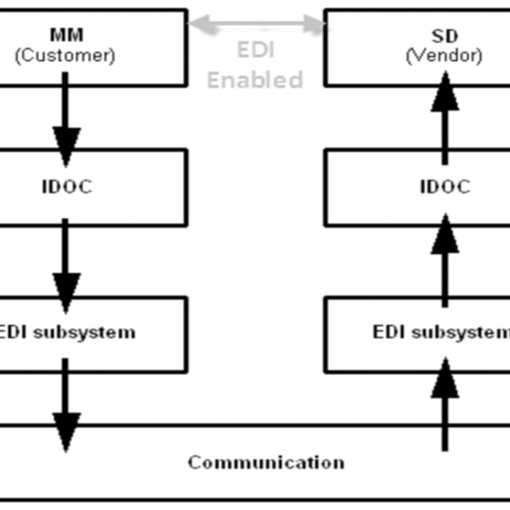In the dynamic world of web development, front end development plays a pivotal role in shaping the user experience and visual appeal of websites and applications. Let’s dive into the essentials, trends, and challenges that define the fascinating realm of front-end development.
Basics of Front end Development
HTML, CSS, JavaScript: The Holy Trinity
Front end development relies on three core languages: HTML for structure, CSS for styling, and JavaScript for interactivity. Understanding the synergy between these languages is fundamental to creating a seamless user interface.
Tools and Frameworks
Popular Tools for Front end Development
Tools like Visual Studio Code, Sublime Text, and Atom enhance the coding experience for front-end developers. Choosing the right tools can significantly impact productivity.
Frameworks: React, Angular, Vue.js
Frameworks provide a structured approach to development. React, Angular, and Vue.js are among the most popular, each offering unique features and benefits.
Responsive Design
Importance of Responsive Design
With the prevalence of various devices, responsive design is crucial. It ensures that websites and applications adapt seamlessly to different screen sizes, providing a consistent user experience.
Techniques for Creating Responsive User Interfaces
Media queries, flexible grids, and fluid images are essential techniques for achieving responsive design and accommodating diverse devices.
User Experience (UX) Design
Collaboration with UX Designers
Front-end developers collaborate closely with UX designers to bring design concepts to life. This collaboration enhances user interaction and overall satisfaction.
Enhancing User Interaction through Design Principles
Implementing design principles such as simplicity, consistency, and feedback loops contributes to a positive user experience.
Trends in Front-end Development
Rise of Progressive Web Apps (PWAs)
PWAs combine the best of web and mobile apps, offering offline functionality and enhanced performance. They represent a significant trend in modern development.
WebAssembly and Its Impact
WebAssembly enables high-performance web applications by allowing code written in languages like C++ and Rust to run in the browser. Its impact on development is revolutionary.
Accessibility in Front-end Development
Designing for Inclusivity
Front-end developers play a crucial role in making websites and applications accessible to all users, regardless of disabilities. Prioritizing accessibility is a key ethical consideration.
Importance of Accessible Web Development
Accessible web development not only broadens the audience but also aligns with legal and ethical standards. It’s a cornerstone of responsible development.
Cross-browser Compatibility
Challenges in Ensuring Compatibility
Browser inconsistencies pose challenges in development. Ensuring compatibility across browsers is vital for a seamless user experience.
Strategies for Addressing Cross-browser Issues
Testing, using polyfills, and staying informed about browser updates are strategies to address cross-browser compatibility challenges.
Performance Optimization
Importance of Fast-loading Websites
User experience is closely tied to website performance. Optimizing front-end performance ensures fast-loading pages and a positive user impression.
Techniques for Optimizing Front-end Performance
Minification, compression, and lazy loading are techniques to optimize front-end performance, creating a smooth and responsive user experience.
Version Control in Front-end Development
Role of Version Control Systems
Version control, especially with systems like Git, is essential for tracking changes, collaborating seamlessly, and managing codebase versions.
Collaborative Coding and Branching Strategies
Effective collaboration involves structured coding practices and strategic use of branching strategies to manage development workflows.
Front-end Development and SEO
Impact of Front-end Practices on SEO
Front-end practices influence search engine optimization. Proper HTML structure, meta tags, and content hierarchy contribute to SEO success.
Best Practices for SEO-friendly Front-end Code
Writing clean and semantic code, optimizing images, and using proper heading structures are key practices for creating SEO-friendly front-end code.
Challenges in Front-end Development
Browser Inconsistencies
Dealing with variations in how different browsers interpret code can be challenging. Front-end developers need to address these inconsistencies for a uniform user experience.
Keeping Up with Evolving Technologies
It evolves rapidly. Staying updated with new technologies, frameworks, and best practices is an ongoing challenge for developers.
Learning Resources for Front-end Development
Online Courses, Tutorials, and Communities
Numerous online platforms offer courses and tutorials for development. Engaging with communities provides support and shared learning experiences.
Tips for Continuous Skill Development
It requires continuous learning. Staying curious, exploring new technologies, and participating in coding communities are effective strategies for skill development.
Collaboration in Front-end Development
Collaboration with Back-end Developers and Designers
Effective collaboration between front-end developers, back-end developers, and designers is crucial for seamless integration and a cohesive end product.
Importance of Effective Communication
Clear communication ensures that all team members are aligned on project goals, timelines, and expectations, fostering a collaborative work environment.
Future of Front-end Development
Evolving Technologies and Their Impact
The future holds promises of even more interactive and immersive user experiences. Evolving technologies like AR/VR and AI will likely shape the next frontier.
Anticipated Trends in the Coming Years
Trends such as the continued rise of PWAs, increased use of AI in front-end development, and the integration of WebAssembly
You may be interested in:





